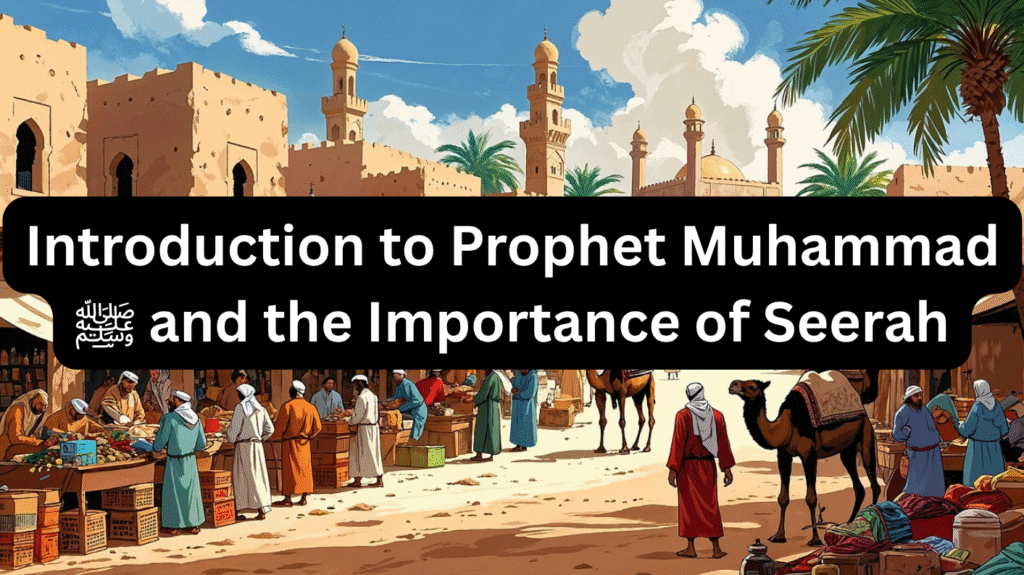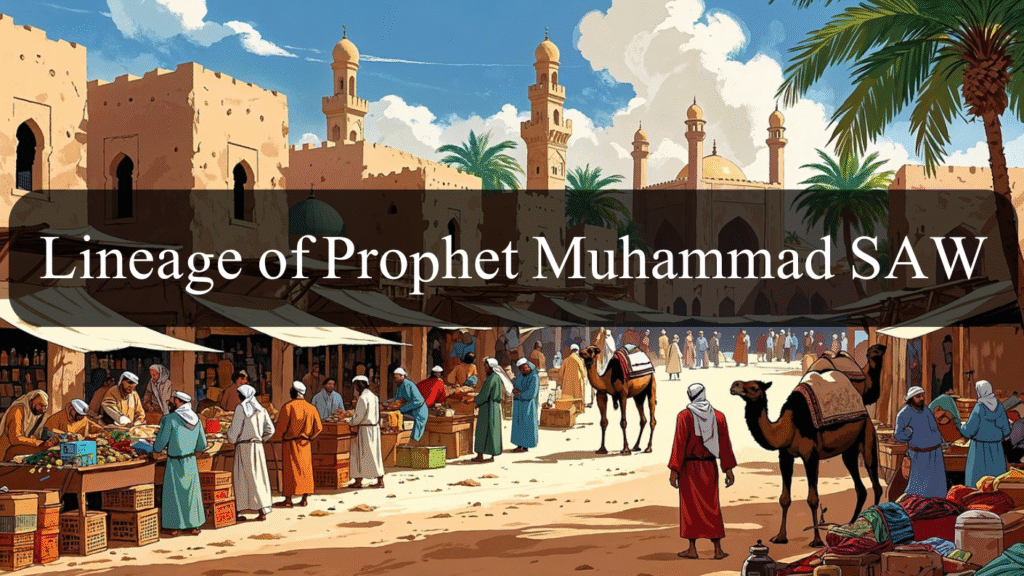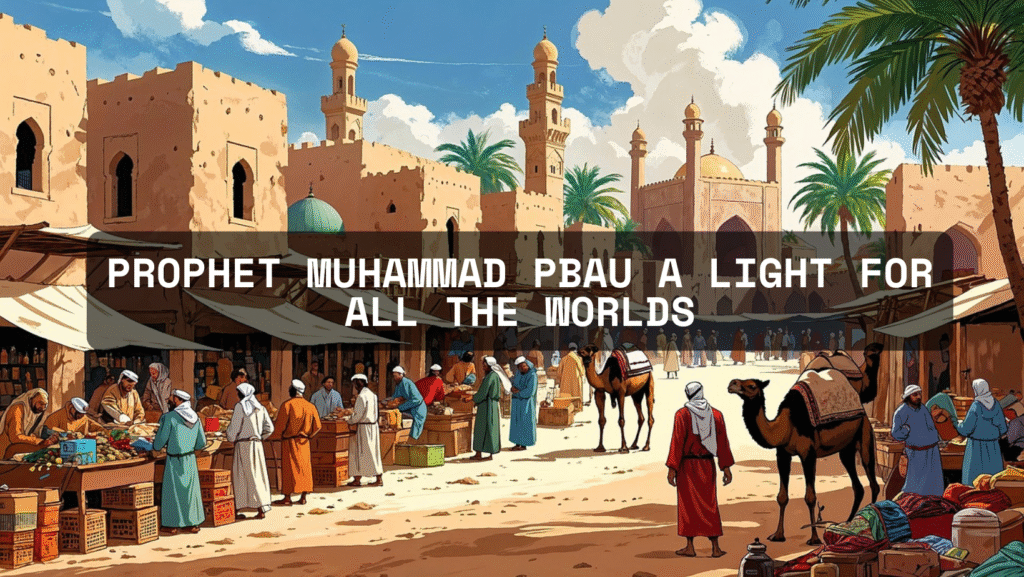The Islam religion text faced one of its most severe trials during the social boycott in Sha‘b Abi Talib. After Quraysh’s failed attempts to silence the message of Prophet Muhammad (PBUH) through insults, threats, and torture, they escalated their opposition to an organized and cruel form of suppressiona full-blown social and economic boycott. This marked one of the most difficult and painful chapters in early Islamic history. Implemented in the 7th year of Prophethood, this boycott continued for nearly three years, bringing unimaginable hardship to the Prophet (PBUH), his family, and his loyal followers.
Background of the Boycott
As the number of Muslims steadily grew, the Qurayshi chiefs grew increasingly alarmed. The message of Islam religion text was not only gaining acceptance among the poor and enslaved but had begun entering influential households. Fearing loss of their religious authority and political control, Qurayshi leaders such as Abu Jahl, Abu Lahab, and Walid ibn al-Mughirah gathered at Dar al-Nadwah, the council hall of Makkah, to devise a plan to socially isolate the Prophet (PBUH).
They resolved to boycott:
Banu Hashim (the Prophet’s tribe)
Banu Muttalib (closely allied family)
The boycott included both Muslims and non-Muslims of those clans who supported Prophet Muhammad (PBUH) out of tribal loyalty. The Quraysh drafted a formal agreement and hung it on the wall of the Kaaba as a declaration of commitment.
Terms of the Boycott:
No trade or business dealings
No marriages between the clans and others
No social interactions or visits
No financial support or lending
(Reference: Seerah Ibn Hisham, Vol 1, p. 403)
Life Inside Sha‘b Abi Talib
The Prophet (PBUH), along with Abu Talib, Khadijah (RA), Ali (RA), and the rest of the Banu Hashim and Banu Muttalib, were forced to relocate to Sha‘b Abi Talib, a small valley with only one narrow entrance, located near the mountains of Makkah.
Living Conditions:
Food scarcity: Supplies were blocked. People survived on tree leaves, dried hides, and wild grass. (Al-Bidaya wa’l-Nihaya, Ibn Kathir, Vol 3)
Malnutrition and starvation became common. Children’s cries echoed in the valley due to hunger.
Complete isolation: No social visits, business interactions, or external communication.
Dangerous surveillance: Anyone attempting to help was threatened or punished.
Khadijah (RA), a wealthy and noble woman of Makkah, spent all her resources to feed the people in exile. Her sacrifice during this period greatly affected her health and led to her eventual death.
Acts of Secret Support
Despite the strict ban, a few noble-hearted Makkans tried to help secretly:
Hakim ibn Hizam (nephew of Khadijah): Secretly smuggled food and supplies through the mountains.
Hisham ibn ‘Amr, Zuhair ibn Abi Umayyah, Mut‘im ibn ‘Adi, and Abu al-Bakhtari were among those who later took steps to end the pact, opposing its cruelty.
(Reference: Dala’il an-Nubuwwah, Al-Bayhaqi, Vol 2)
The Miracle of the Eaten Scroll
When a few Makkans began to feel remorse over the boycott, they decided to bring it to an end. As they marched to the Kaaba to revoke the written agreement, Abu Talib informed the Quraysh that Prophet Muhammad (PBUH) had told him Allah had sent termites to eat away the parchment, sparing only the words: “In Your Name, O Allah.”
Upon checking, they found the pact completely destroyed, except for the blessed words. This miracle stunned the onlookers and shamed the Quraysh. The boycott officially ended.
(Reference: Seerah Ibn Hisham, Vol 1, p. 407)
Emotional and Physical Impact
The end of the boycott was a relief, but the damage had already taken its toll:
Khadijah (RA) passed away shortly after, weakened by years of sacrifice and hunger.
Abu Talib, the Prophet’s uncle and protector, also died the same year. His loss left the Prophet (PBUH) more vulnerable to attacks.
These events led to the naming of the year as ‘Aam al-Huzn (The Year of Sorrow).
Their deaths marked the end of a period of both protection and personal comfort for the Prophet (PBUH), yet his mission only grew stronger in resolve.
Spiritual Strength and Lessons
Despite the harsh boycott:
The believers remained steadfast in their commitment to Islam religion text.
The Prophet (PBUH) displayed unmatched patience, kindness, and hope in Allah’s mercy.
The boycott became a powerful testimony of sacrifice for the sake of truth.
This chapter of Seerah teaches us:
True faith demands resilience.
Social injustice must be confronted with unity and conviction.
Miracles reinforce faith in divine support during the darkest times.
Conclusion
The boycott in Sha‘b Abi Talib was not just a test of physical endurance, but of spiritual resolve. It brought hardship, loss, and suffering—but also revealed the strength of a unified, faith-driven community. Their suffering and endurance remain a beacon for Muslims today. The Prophet Muhammad (PBUH), even under extreme conditions, remained unwavering in his mission to spread the Islam religion text, laying the foundation for Islam’s eventual triumph across Arabia and beyond.
References
• Seerah Ibn Hisham, Vol 1, pp. 403/407
• Al-Bidaya wa’l-Nihaya – Ibn Kathir, Vol 3
• Dala’il an-Nubuwwah – Al-Bayhaqi, Vol 2
• The Holy Qur’an




